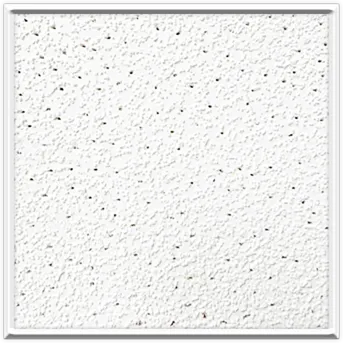- Afrikaans
- Albanian
- Amharic
- Arabic
- Armenian
- Azerbaijani
- Basque
- Belarusian
- Bengali
- Bosnian
- Bulgarian
- Catalan
- Cebuano
- Corsican
- Croatian
- Czech
- Danish
- Dutch
- English
- Esperanto
- Estonian
- French
- German
- Greek
- Hindi
- Indonesian
- irish
- Italian
- Japanese
- Korean
- Lao
- Malay
- Myanmar
- Norwegian
- Norwegian
- Polish
- Portuguese
- Romanian
- Russian
- Serbian
- Spanish
- Swedish
- Thai
- Turkish
- Ukrainian
- Uzbek
- Vietnamese
сеп . 24, 2024 09:19 Back to list
Exploring the Benefits of Drop Ceiling Tile Grid Installation and Design Options
Understanding Drop Ceiling Tile Grids A Comprehensive Overview
Drop ceiling tile grids have become a popular choice for residential and commercial spaces due to their versatility, aesthetic appeal, and functional benefits. Often referred to as suspended ceilings, these systems consist of a framework of metal grid components that supports lightweight tiles or panels. This article provides an overview of the components, benefits, installation processes, and maintenance of drop ceiling tile grids.
Components of Drop Ceiling Grids
A drop ceiling grid system is primarily composed of main runners, cross tees, and edge trims. Main runners are the long horizontal sections that stretch across the room, while cross tees connect perpendicularly to these runners, creating a lattice-like framework. Tiles or panels are then dropped into the grid, allowing for easy access to the space above the ceiling, an essential feature for hiding electrical wiring, plumbing, and HVAC systems.
Benefits of Drop Ceiling Tile Grids
1. Aesthetic Flexibility One of the key advantages of drop ceiling tiles is the variety of styles, colors, and materials available. Whether you desire a modern look with sleek panels or a more traditional design with textured tiles, there’s a drop ceiling option to match every decor style.
2. Sound Absorption Many drop ceiling tiles are engineered with sound-dampening properties, making them ideal for spaces where noise reduction is a priority, such as offices, classrooms, and conference rooms. This feature aids in creating a more productive environment by minimizing distractions.
3. Easy Installation and Modification Installing a drop ceiling grid system is a straightforward process that can often be completed by DIY enthusiasts. Additionally, if changes need to be made in the future, removing and replacing tiles is quite simple, providing flexibility for renovations or repairs.
drop ceiling tile grid

4. Cost-Effective Drop ceiling tile grids represent a cost-efficient solution for ceiling installation. They provide an excellent way to achieve a polished, finished look without the expense of traditional ceiling materials.
5. Concealed Utilities Drop ceilings are excellent for hiding ductwork, cables, and plumbing, which is particularly advantageous in commercial and industrial settings. This arrangement not only improves aesthetic appeal but also enhances safety by keeping these utilities out of sight.
Installation Process
The installation of a drop ceiling tile grid generally follows a step-by-step process. First, the existing ceiling height must be measured to determine the appropriate height for the grid. After outlining the grid layout, main runners are installed, followed by the cross tees. Once the framework is up, tiles are inserted into the grid. It’s important to ensure that the joints are tight and that the tiles are level, contributing to a clean, professional appearance.
Maintenance and Care
Maintaining a drop ceiling requires periodic cleaning, typically with a damp cloth or vacuum to remove dust and debris. Some tiles can even be replaced if they become stained or damaged, allowing for easy upkeep without the need for complete grid replacement.
In conclusion, drop ceiling tile grids offer an array of advantages, making them a popular choice for various applications. Their ease of installation, aesthetic versatility, and functional benefits make them not just a practical solution, but also a stylish one, fitting seamlessly into any environment. Whether for a home renovation or a commercial project, exploring the options within drop ceiling systems can greatly enhance any space.
-
Transform Interiors with PVC Gypsum Ceiling: A Stylish, Durable, and Moisture-Resistant SolutionNewsMay.19,2025
-
The Smart Interior Upgrade: Discover the Durability and Versatility of Gypsum Ceiling Access Panel SolutionsNewsMay.19,2025
-
The Smart Choice for Interior Design: Discover the Value of PVC Gypsum Ceiling SolutionsNewsMay.19,2025
-
Mineral Fiber Ceiling Tiles: The Smart Blend of Performance and AestheticsNewsMay.19,2025
-
Mineral Fiber Ceiling Tiles: The Superior Choice Over Gypsum for Sound and Fire SafetyNewsMay.19,2025
-
Mineral Fiber Ceiling Tiles: Eco-Friendly Strength and Style for Every CeilingNewsMay.19,2025







